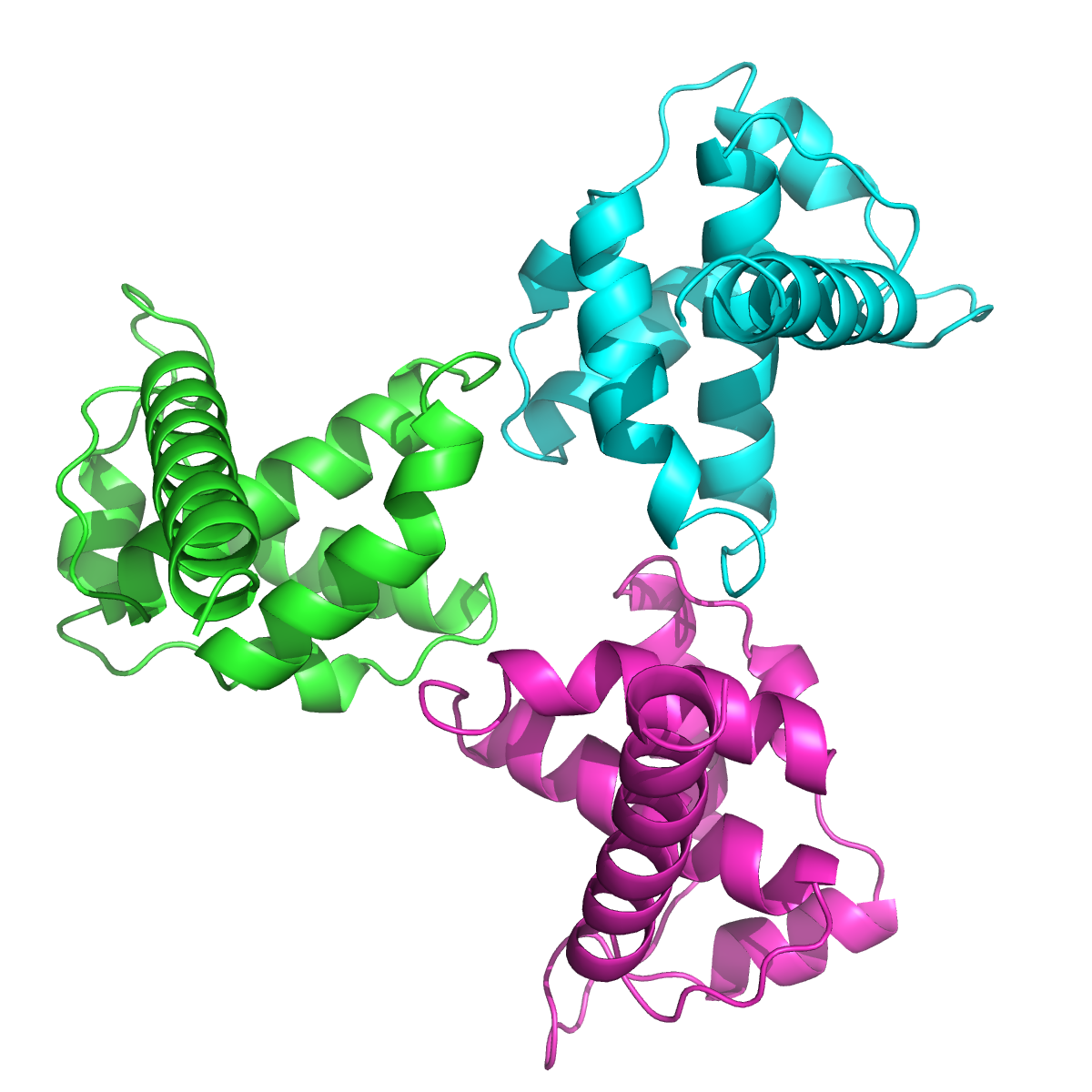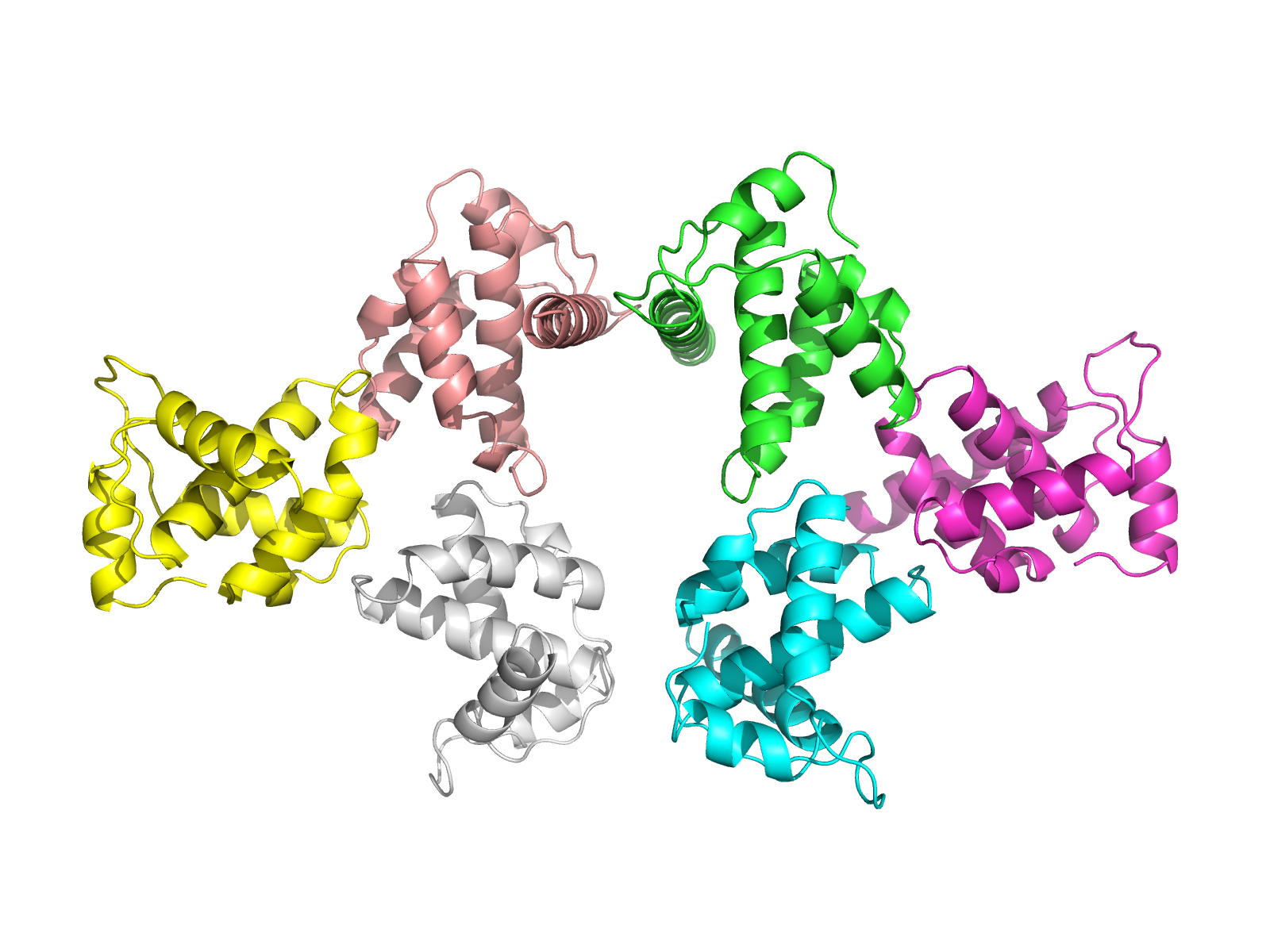Orient: Difference between revisions
Jump to navigation
Jump to search
Jaredsampson (talk | contribs) (provided an example of orient for a model with NCS symmetry) |
Jaredsampson (talk | contribs) (→EXAMPLES: added a second image and <code> tags) |
||
| Line 23: | Line 23: | ||
orient | orient | ||
util.cbc | util.cbc | ||
will produce the | will produce the first image below. However, if there is a larger symmetry, e.g. two trimers, this will not work. In the above example, leaving out <code>remove (!chain A,B,C)</code> from the script results in the second image below. | ||
<gallery> | <gallery> | ||
Image:1hiw orient.png|One trimer from 1hiw after | Image:1hiw orient.png|One trimer from 1hiw after "orient" command. | ||
Image:1hiw orient2.png|Both trimers from 1hiw after "orient" command. | |||
</gallery> | </gallery> | ||
===SEE ALSO=== | ===SEE ALSO=== | ||
Latest revision as of 12:35, 7 September 2010
orient aligns the principal components of the atoms in the selection with the XYZ axes. The function is similar to the orient command in X-PLOR.
USAGE
orient object-or-selection [, state] orient (selection)
PYMOL API
cmd.orient( string object-or-selection [, state = 0] )
NOTES
state = 0 (default) use all coordinate states state = -1 use only coordinates for the current state state > 0 use coordinates for a specific state
EXAMPLES
For models with NCS symmetry, orient will align the model with the symmetry axis centered along the viewport's z axis. For example,
fetch 1hiw, async=0 as cartoon remove (!chain A,B,C) orient util.cbc
will produce the first image below. However, if there is a larger symmetry, e.g. two trimers, this will not work. In the above example, leaving out remove (!chain A,B,C) from the script results in the second image below.

